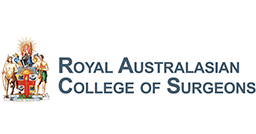Spine
The treatment for vertebral compression fractures aims at reducing the pain and stabilizing and repairing the fracture. This is best achieved by medications, back braces, bed rest, and physical therapy.
Non-steroidal anti-inflammatory drugs such as ibuprofen or naproxen may be prescribed to relieve bone, muscle and nerve pain. Your doctor may prescribe a back brace that supports the back and restricts movement.
Surgery may be needed in patients who continue to have severe pain despite non-surgical treatment.
Two minimally invasive surgical procedures for treating vertebral compression fractures are:
Kyphoplasty: In this procedure, a large needle is introduced into the spine with a balloon called a bone tamp and inflated until it expands to the desired height. The created space is then filled with or injected with orthopaedic cement called polymethylmethacrylate (PMMA). This procedure restores the height of the vertebrae and reduces the deformity.
Vertebroplasty: This technique involves inserting a cement material called polymethylmethacrylate, into the bone of the collapsed vertebra with the needle and syringe under the guidance of X-ray. This technique is performed to stabilize the fracture and prevent further collapse.













